The Asus ROG Strix OLED XG27 AQDMG is an OLED gamer display from Asus ROG, less expensive than the classic AQDM version. It features a 27″ panel, albeit in 1440p, with a 240 Hz frequency – a very interesting display frequency for a QHD panel, and what’s more, OLED and 99% DCI-P3. What is this screen really worth? Let’s find out in our full review.
Design of the ROG Strix OLED XG27 AQDMG
The ROG Strix OLED XG27 AQDMG arrives in a fairly classic box, but with quite a few accessories. Of particular note are two power cables to connect to the AC adapter, one fairly short, the other a little longer. With this, DisplayPort and HDMI cables, supplied in a small zipped fabric pouch. The budget has been set, but we can’t really understand why here.
The manufacturer also provides an additional hanging system, to install the screen on a VESA mount in particular, if you don’t want to install it on the stand. In my test, I’m going to attach the ROG Strix XG27 AQDMG to its stand, in order to test the whole thing properly.
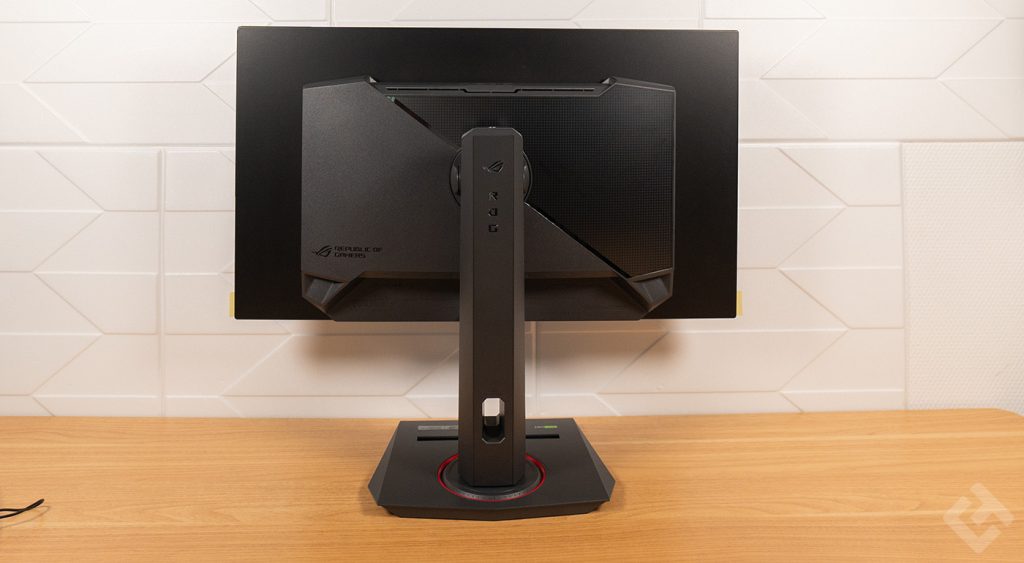
The first thing you notice when you unpack the screen is how slim it is. Indeed, the slab is quite thin over most of its surface, which is more aesthetic than anything else. It’s normal, you might say, this being an OLED panel. Ultra-thin by nature, we can afford to make the chassis quite thin in places.
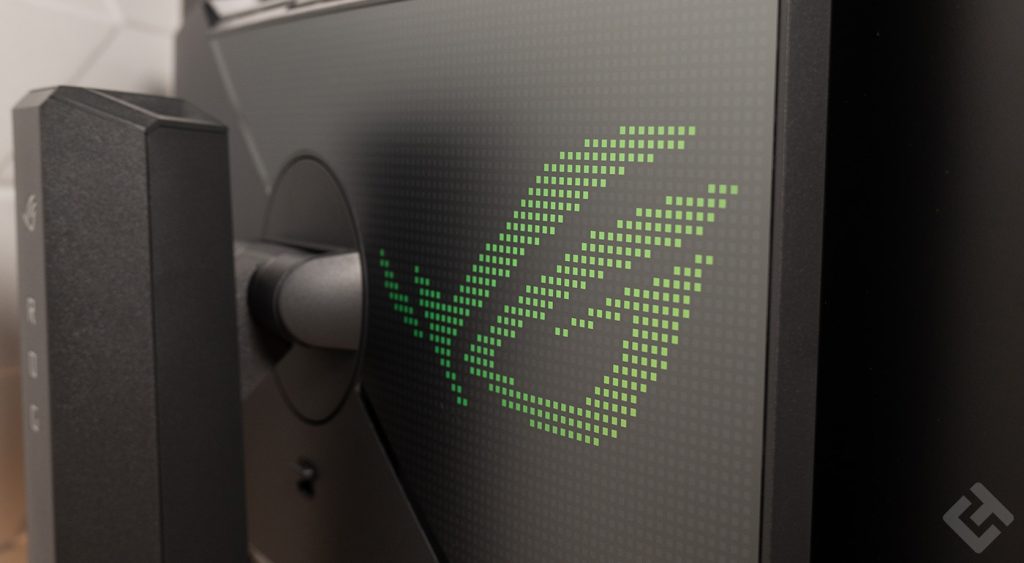
On the back, you’ll find the ROG logo, as well as the screen’s connectivity, which is quite well supplied here. Also noticeable is the traditional joystick on the back, for the various settings, as well as two other buttons on the sides. A special ROG touch, of course, is the backlit logo at the bottom of the screen, the front, which logically hides the buttons on the back.

Let’s talk about the front panel, and let me be clear: I’ve never seen such a beautiful screen. Usually, it’s a classic product, like my two Philips 4K screens, but they’re not OLED, which can be sober, but here, it’s frankly beautiful. This pretty, shiny slab is certainly not that distracting, with this plain glass plate from top to bottom of the slab and very thin plastic edges, it’s elegant!
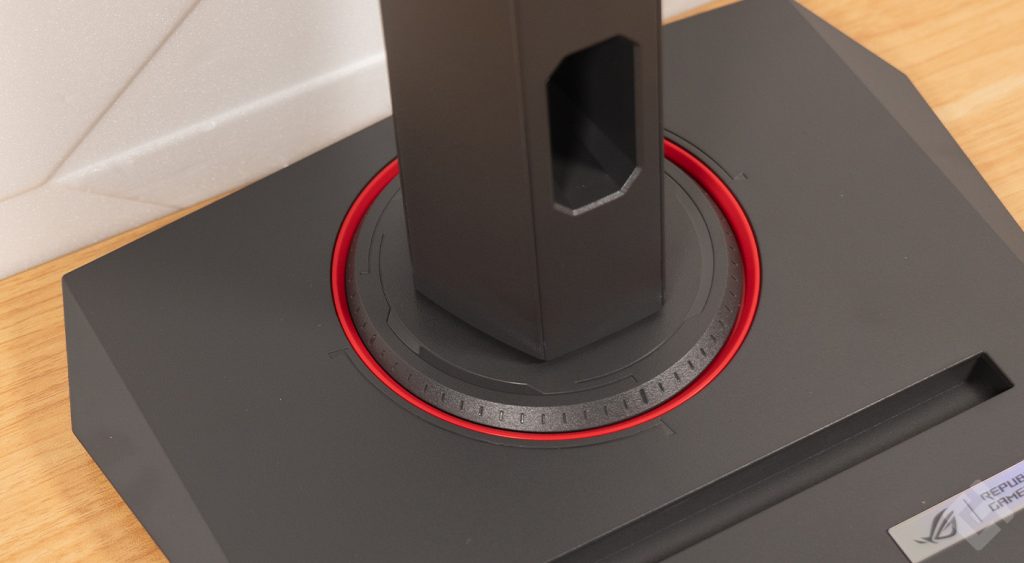
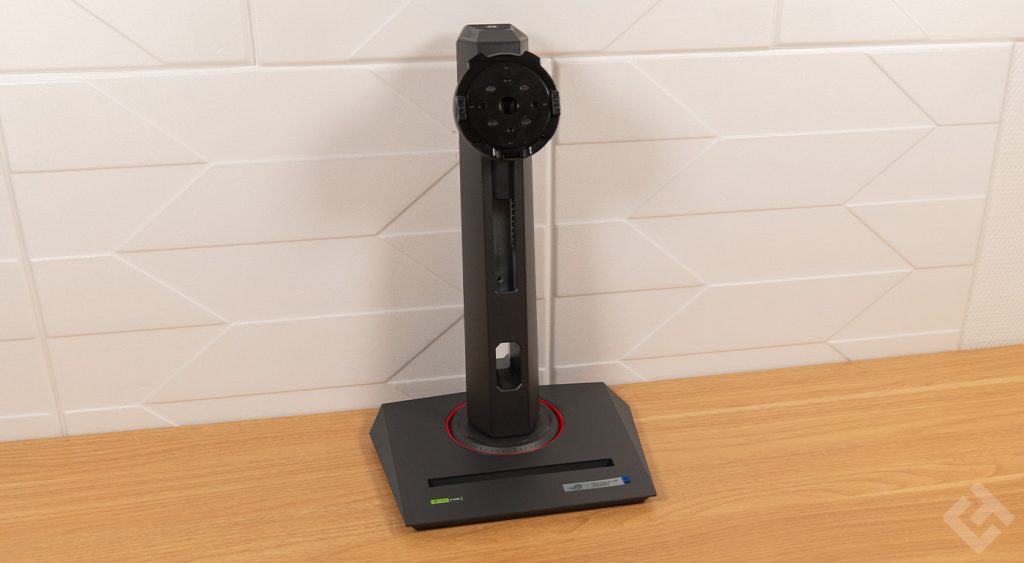
But the ROG Strix OLED XG27 ADQMG is also practical, with a cable pass-through in the stand, as well as perfect ergonomics, allowing it to turn, tilt, rise and fall to fit perfectly. Last but not least, this sturdy and aesthetically pleasing stand features a smartphone holder. Very practical, this allows you to place a phone with codes for a game in particular, or any other use in style.
ROG Strix OLED XG27 AQDMG specifications
| Model | Asus ROG Strix OLED XG27 AQDMG |
| Screen size | 26.5 inches |
| Screen format | 16:9 |
| Panel type | W-OLED |
| Colors | 1.07 billion |
| Color space | 99% DCI-P3 |
| Incurved | No |
| Resolution | 2560 x 1440 pixels |
| Refresh rate | 240 Hz |
| Brightness | 450 cd/m² (HDR, peak) 1300 cd/m² (HDR, peak) |
| Contrast | 1 500 000:1 |
| Response time | 0.03 ms |
| Speakers | No |
| FreeSync | Yes: FreeSync Premium |
| G-Sync | Yes |
| Height adjustment | 100 mm |
| VESA support compatibility | 100 x 100 mm |
| Dimensions with stand / without stand | 605 mm wide with stand / 605 mm without stand 508 mm high with stand / 368 mm without stand 210 mm deep with stand / 50 mm deep without stand |
| Connections | 2 HDMI 2.0 1 DisplayPort 1.4 1 3.5 mm jack 1 power port 2 USB-A 3.1 Gen 1 1 USB-B |
| Weight | Display weight: 4.2 kg Total weight: 6.7 kg |
| Viewing angles | 178°/178° |
| OSD / Menu | Joystick |
Incredible image quality
What really impressed me was the picture quality. It’s true that it’s a 1440p panel, but the display quality is very good indeed. I’ll tell you more about the calibration later, as it’s not really that great, but it’s still an OLED panel, and the colors are designed to show off a lot, not to be as faithful to reality as possible.
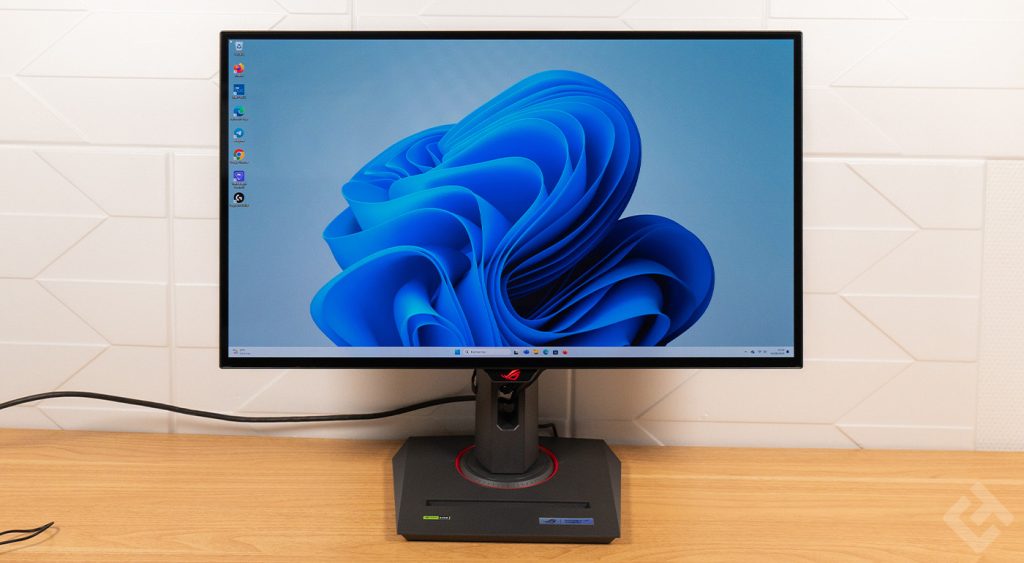
In any case, I really appreciate the 240 Hz frequency, which delivers great gaming performance. I’ve been able to play GTA 5 on OLED, which is not an unpleasant experience, to say the least, and other games such as Alan Wake 2, F1 2022, Flilght Simulator 2020 and so on. Dofus also plays exceedingly well on OLED. What’s more, for FPS, the response time of 0.03 ms is excellent, so there’s no latency at all.
However, the screen calibration is not optimal. Some people will appreciate the ultra-realistic colors and not care, while others will. In any case, I’m still talking about this XG27 AQDMG, because in a product test, I test absolutely everything, and in this case, it’s impossible to pass it up.

Indeed, the Delta E is very high, at almost 10, whereas the maximum value is supposed to be 4 or less.
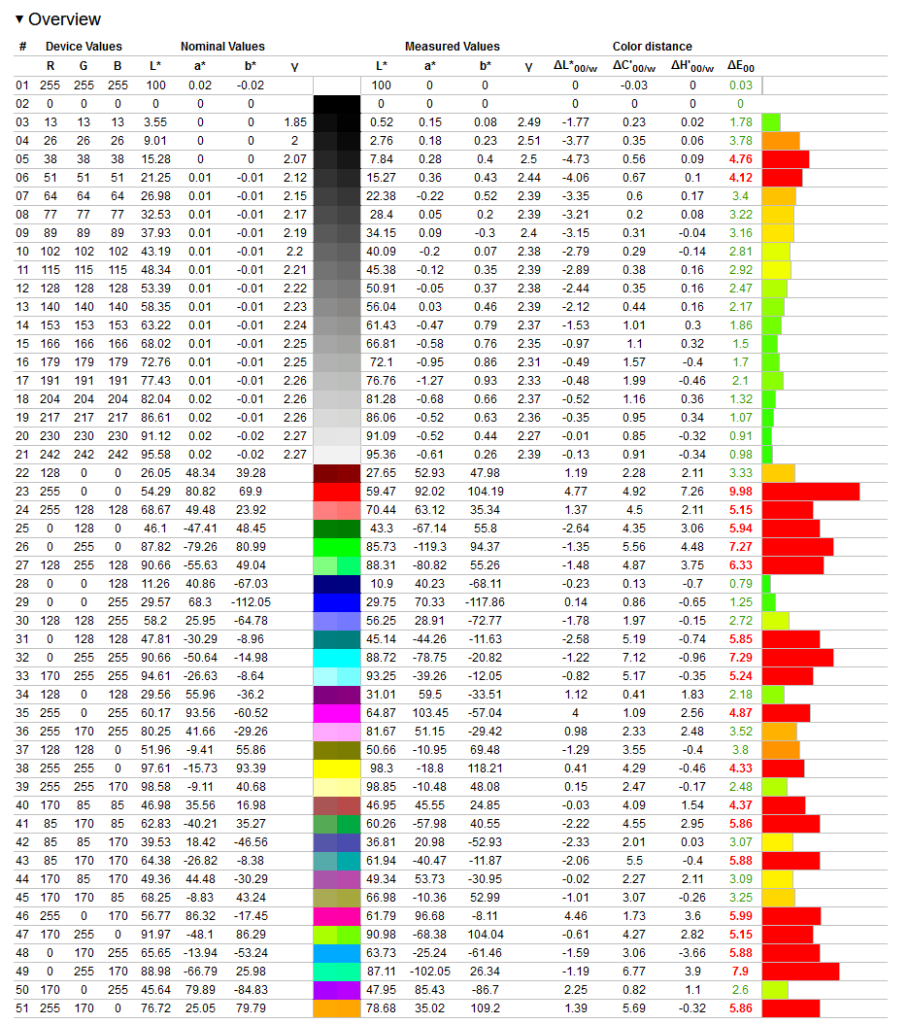
On the color side, on the other hand, the Delta E isn’t that great, but not all colors are in the red, unlike other models such as MSI’s latest.
Connectivity is on point
This display boasts a well-stocked connectivity system, with :
- 1 x 3.5 mm jack port
- 2 HDMI 2.0 ports
- 1 DisplayPort 1.4
- 2 USB-A 3.2 Gen 1 ports
- 1 USB-B port
What I really regret, however, is that unlike the MSI MPG 491CQP QD-OLED, the USB-C connector here is conspicuous by its absence. Admittedly, you’re not necessarily going to play games with a laptop, although Asus ROG offers some very good machines, but it would have been handy, if only to charge a smartphone.

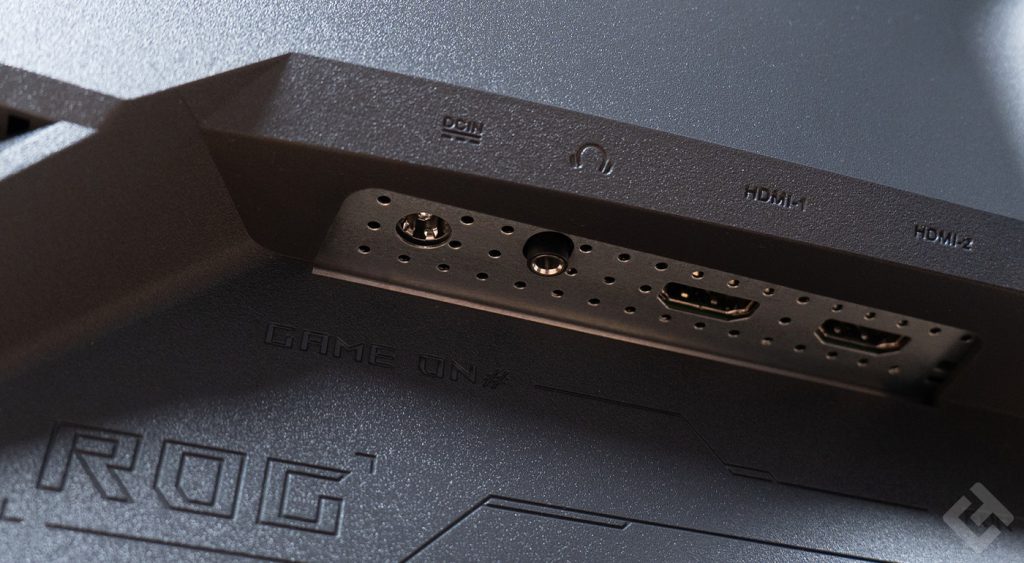
As for the rest of the connectivity, it’s satisfactory: for example, you can connect a gamer mouse and keyboard directly to the screen, avoiding the need for dongles behind the PC.
Ergonomics: with smartphone holder
In terms of ergonomics, the Asus ROG Strix OLED XG27 AQDMG is very good. As is often the case with Asus ROG displays, the screen can be rotated, and there’s also a scale to set it perfectly straight. The screen rotates at +45° and -45°, but you can also turn it vertically if you wish, to use it as a screen for reading live chat in particular, or editing videos in vertical format. Although it’s an expensive screen to read a chat!
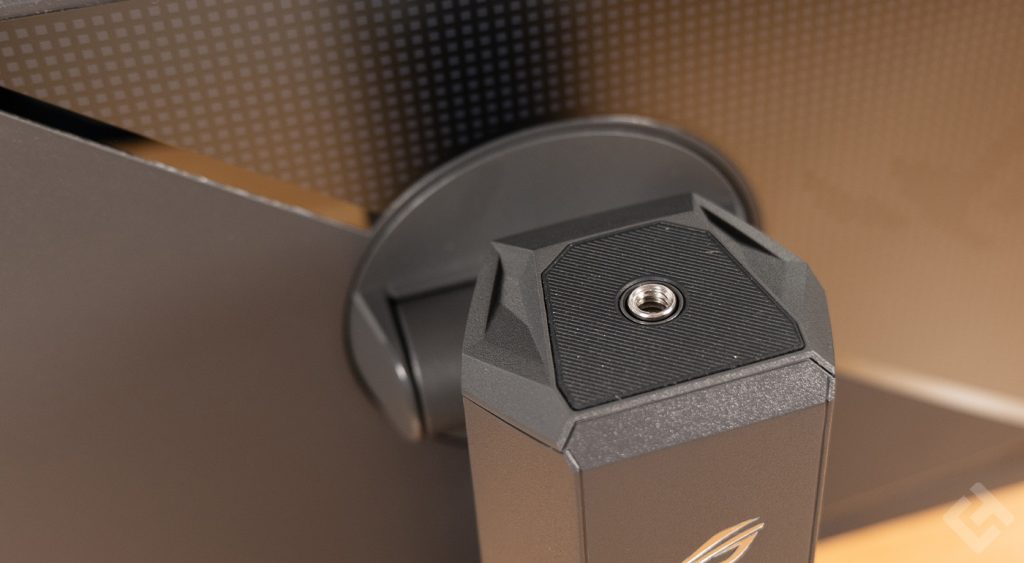
Like many models, it can also be tilted, from 20° to -5°, so that the screen is perfectly aimed at you, which is just as well! Last but not least, the height can be adjusted via the foot, with an amplitude of up to 12 centimetres, always ideal for getting the perfect height.
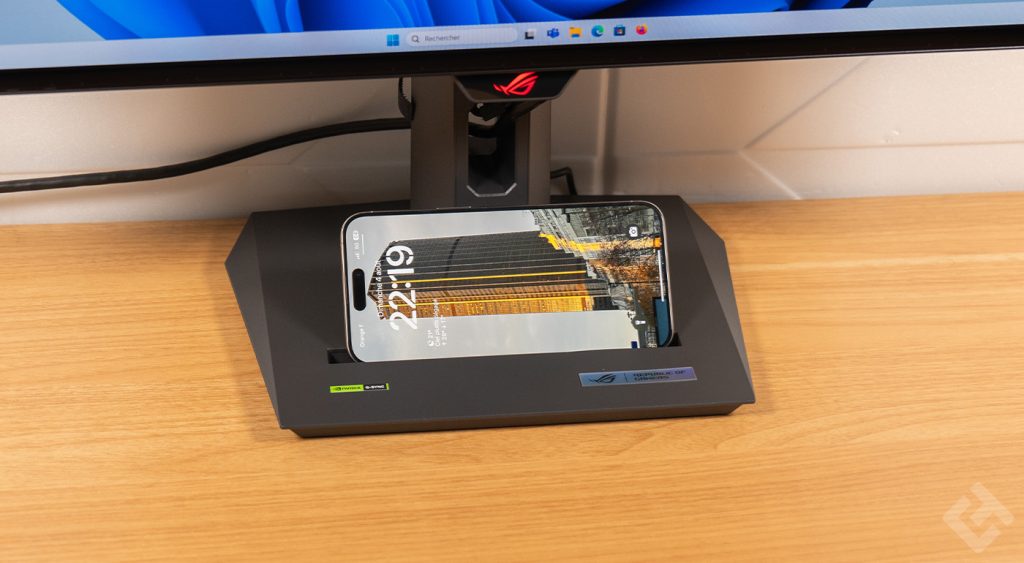
There’s a welcome cable pass-through at the bottom of the stand, as well as a smartphone holder on the base. The latter could, however, have been made a little narrower, to hold the smartphone more upright. So, what’s the point of putting your smartphone here? To display a tutorial video for a mission, to display an application or a site with codes for a game, in short, a number of uses that are always very useful.
A practical, intuitive OSD menu
The OSD manu is controlled by the joystick on the back of the screen, more precisely, on the back of the small backlit ROG logo.
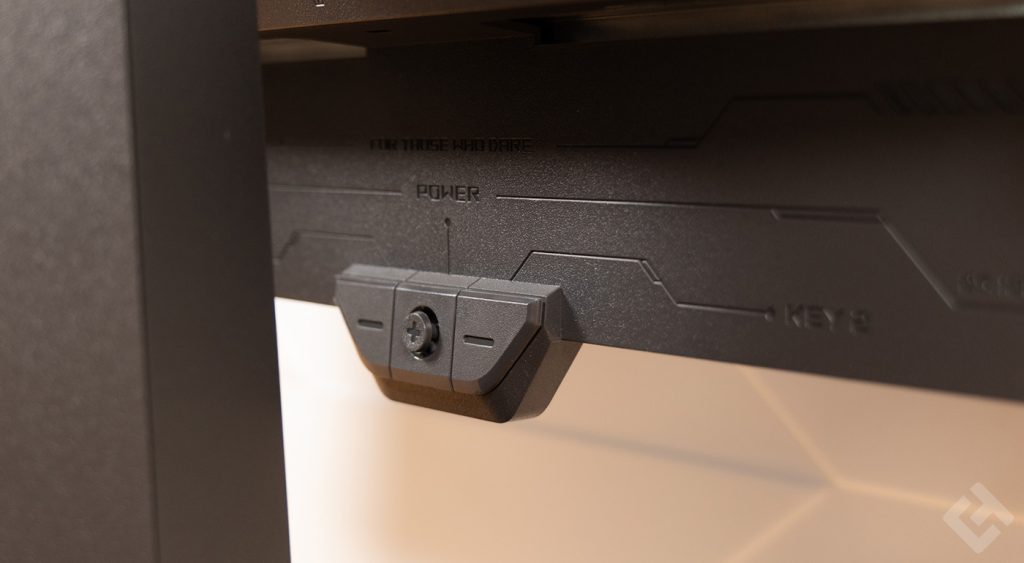
The manu is superbly comprehensive, but after translating it into French, you’ll find a few concepts that aren’t always well translated, but nothing dramatic here.

The first part offers variable refresh rate, as well as a few options for game mode, such as Shadow Boost, to bring out shadows more effectively. Don’t be fooled by the information at the top of the screen concerning frequency and resolution, as the photos were taken on a machine other than the one used for the test.
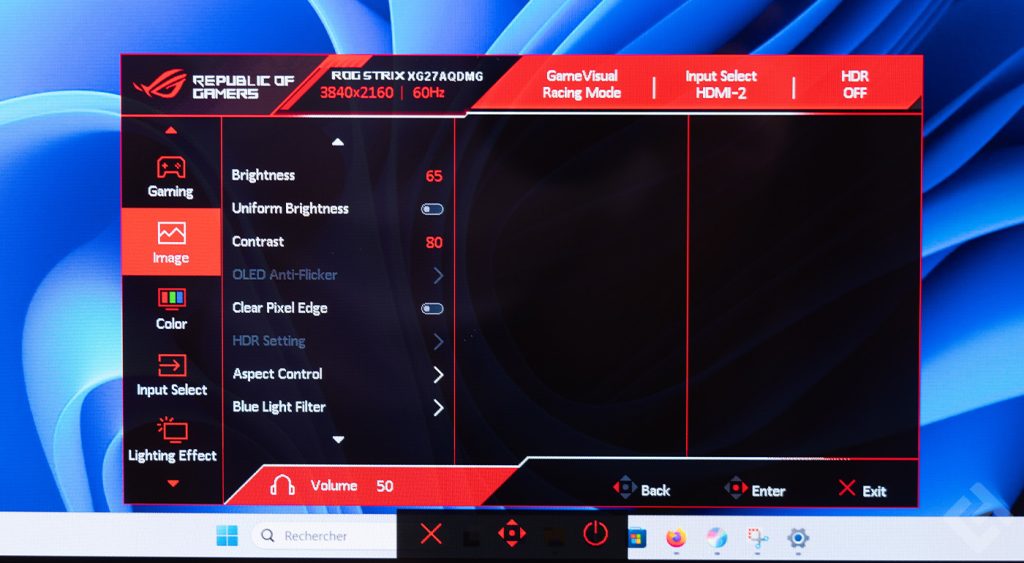
In the second section, you can adjust brightness and activate the option for uniform brightness. On this Strix OLED XG27 AQDMG, ROG also offers a blue-light filter, which at least significantly reduces blue light.
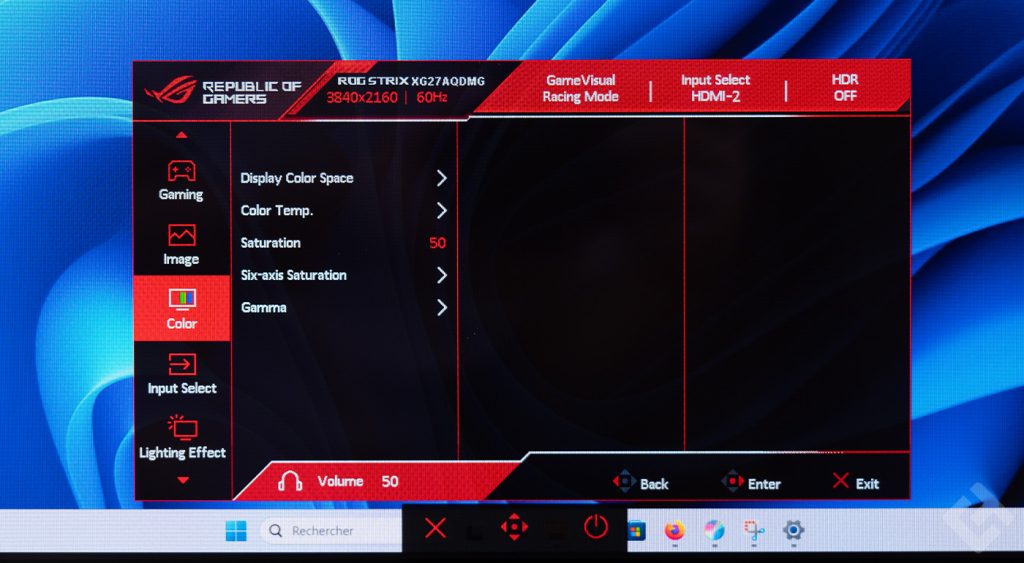
Color temperature, saturation and color space can be selected. For my part, I’m sticking with the DCI-P3 color space, which is richer than sRGB.

The fourth panel features automatic detection of the display source and manual selection, if required, of the connector to be used.
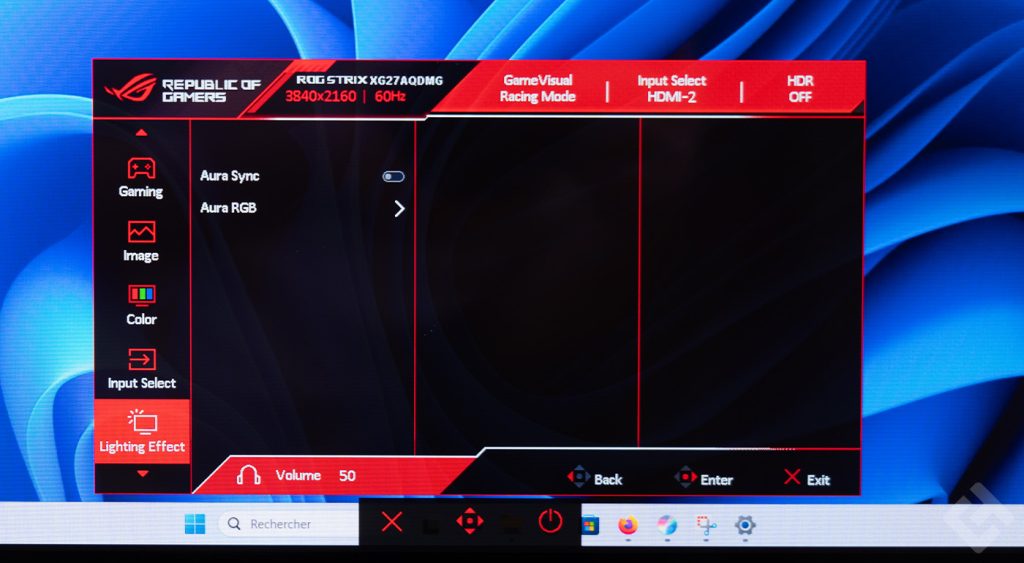
The back is backlit, but this is not very noticeable once the screen is turned. If you have Armoury Crate and an Asus motherboard, as I do, you can activate the Aura Sync function to synchronize the screen with the rest.
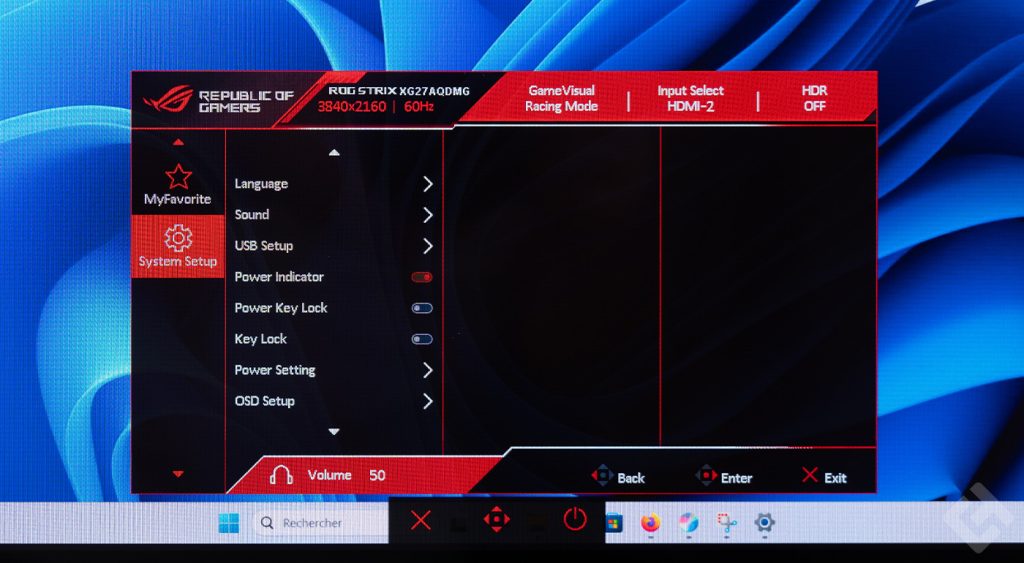
Finally, the last panel shows the general settings.
Asus ROG Strix OLED XG27 AQDMG : Reviews
The Asus ROG Strix OLED XG27 AQDMG is a beautiful screen. First of all, it’s an attractive product, not only in terms of aesthetics, but also in terms of performance. In fact, the display performance and options are very pleasant, and you can configure it as you like, which is a real pleasure. The fact that colors aren’t perfectly accurate and Delta E remains high is mainly for graphic designers or video editors; gamers won’t really be bothered by this, so no worries there!


